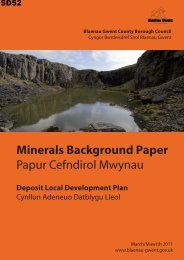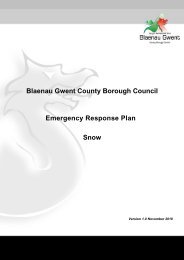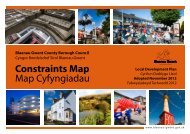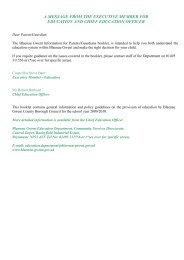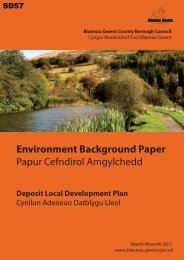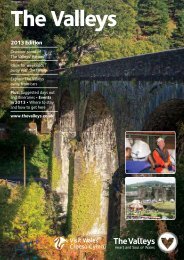Planning Policy Wales - Brecon Beacons National Park
Planning Policy Wales - Brecon Beacons National Park
Planning Policy Wales - Brecon Beacons National Park
You also want an ePaper? Increase the reach of your titles
YUMPU automatically turns print PDFs into web optimized ePapers that Google loves.
have been defined on the basis of the best information available to the planning authority, are<br />
not necessarily exhaustive and that responsibility for determining the extent and effects of such<br />
constraints remains that of the developer.<br />
13.6.3 Plans may indicate that the local planning authority will need to be satisfied that any<br />
actual or potential contamination can reasonably be overcome. Policies for the rehabilitation<br />
and development of existing polluted land and derelict sites should also be included (see also<br />
Section 4.8).<br />
13.7 Development control and contaminated land<br />
13.7.1 <strong>Planning</strong> decisions need to take into account:<br />
• the potential hazard that contamination presents to the development itself, its occupants and the<br />
local environment; and<br />
• the results of a specialist investigation and assessment by the developer to determine the<br />
contamination of the ground and to identify any remedial measures required to deal with any<br />
contamination.<br />
13.7.2 Where significant contamination issues arise, the local planning authority will require<br />
evidence of a detailed investigation and risk assessment prior to the determination of the application<br />
to enable beneficial use of land. Where acceptable remedial measures can overcome such<br />
contamination, planning permission may be granted subject to conditions specifying the necessary<br />
measures. If contamination cannot be overcome satisfactorily, the authority may refuse planning<br />
permission.<br />
13.7.3 Undertaking development on land designated as contaminated land for the purposes of<br />
Part IIA may provide a net cost benefit, by way of taking land from a perceived negative value to<br />
a positive value, necessary to fund the required remediation of contaminated land. If remediation<br />
required under Part IIA is to commence via the planning process it will be the responsibility of the<br />
local planning authority to ensure that the land is suitable for its proposed use. The developer will<br />
need to provide sufficient information to both the local planning authority and the enforcing authority<br />
under Part IIA. In such cases remediation will be enforced through planning permission. However,<br />
in the absence of a definite timetable for implementing planning permission the option should<br />
remain for the enforcing authority under Part IIA to require the necessary remediation and to do so<br />
under the ’polluter pays’ principle.<br />
13.7.4 A development proposal may introduce changes to a site which may result in land<br />
being designated as contaminated under Part IIA, where such land would not be considered<br />
contaminated in its existing state under the provision of the regime. The onus will remain with the<br />
developer to ensure that the development of the site will not result in designation as contaminated<br />
land under Part IIA. The local planning authority will need to ensure that the land is suitable for its<br />
proposed use.<br />
186<br />
<strong>Planning</strong> <strong>Policy</strong> <strong>Wales</strong> Edition 3 - July 2010 - Chapter 13 Minimising and Managing Environmental<br />
Risks and Pollution


